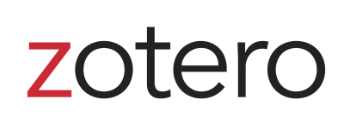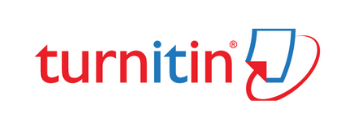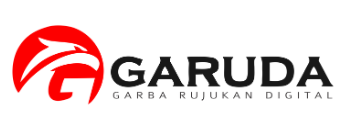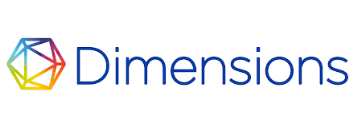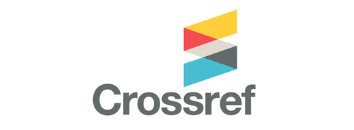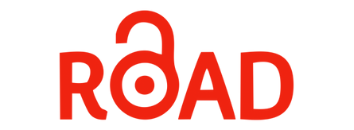Do All Intellectual Capital Dimension Affects Innovation Capability? (Evidence from Indonesian Food and Beverage Industry)
DOI:
https://doi.org/10.24002/kinerja.v25i1.4208Abstract
Using a survey in 120 companies in the food and beverage industry such restaurants and café, manufacture, and retail in Indonesia, this study discusses the effect of intellectual capital on innovation capability. The results prove that not all of intellectual capital dimension support innovation capability. Structural capital and relational capital are knowledge assets that play an important role for the company's ability to innovate. In addition, other findings from this study reveal that human capital has no significant effect on innovation capability. That is because in the context of three companies in the food and beverage industry in Indonesia, the innovation decision is not related to the employee or human capital aspects. Furthermore, this research also has not been able to prove that relational capital moderates the positive influence of human capital on innovation capability. That is because the formation of human capital aspects such skills of employees in this industry are not related to the relations and collaboration of the company.
Keywords: human capital, structural capital, relational capital, innovation capability
References
Al-Dujaili, M., 2012. Influence of Intellectual Capital in the Organizational Innovation. International Journal of Innovation, Management and Technology, 3(2), p.128–135.
Amelia, L., Purbolaksono, A, and Syahayani, Z., 2017. Analisis Peta Industri Makanan dan Minuman di Indonesia (pp. 1–33). pp. 1–33. The Indonesian Institute.
Andreeva, T., & Garanina, T., 2016. Do all elements of intellectual capital matter for organization performance? Evidence from Russian context. Journal of Intellectual Capital, 17(2), p.397–412.
Aramburu, N. and Sáenz, J., 2011. Structural capital, innovation capability, and size effect: An empirical study. Journal of Management and Organization, 17(3), pp.307–325. https://doi.org/10.1017/s1833367200001498
Avermaete, T., Viaene, J., Morgan, E. J., Pitts, E., Crawford, N. and Mahon, D., 2004. Determinants of product and process innovation in small food manufacturing firms. Trends in Food Science and Technology, 15(10), pp.474–483. https://doi.org/10.1016/j.tifs.2004.04.005
Barney, J., 1991. Firm Resources and Sustained Competitive Advantage. Journal of Management, 17(1), pp.99–120. https://doi.org/10.1177/014920639101700108
Bontis, N., 1999. Managing organizational knowledge by diagnosing intellectual capital: Framing and advancing the state of the field. International Journal of Technology Management, 18(5), pp.433–462. https://doi.org/10.1504/ijtm.1999.002780
Bontis, N., William Chua Chong, K. and Richardson, S., 2000. Intellectual capital and business performance in Malaysian industries. Journal of Intellectual Capital, 1(1), pp.85–100. https://doi.org/10.1108/14691930010324188
Buenechea-Elberdin, M., 2017. Structured literature review about intellectual capital and innovation. Journal of Intellectual Capital, 18(2), pp.265–285. https://doi.org/10.1108/JIC-07-2016-0069
Cabello-Medina, C., López-Cabrales, Á., and Valle-Cabrera, R., 2011. Leveraging the innovative performance of human capital through HRM and social capital in Spanish firms. International Journal of Human Resource Management, 22(4), pp.807–828. https://doi.org/10.1080/09585192.2011.555125
Cabrita, M. D. R. and Bontis, N., 2008. Intellectual capital and business performance in the Portuguese banking industry. International Journal of Technology Management, 43(1–3), pp.212–237. https://doi.org/10.1504/IJTM.2008.019416
Carmona-Lavado, A., Cuevas-Rodríguez, G. and Cabello-Medina, C., 2013. Intellectual capital and new product development performance: The mediating role of organizational learning capability. Industry and Innovation, 20(2), pp.133–156.
https://doi.org/10.1080/13662716.2013.771482
Central Bureau of Statistic. 2015. Klasifikasi Baku Lapangan Usaha Indonesia 2015. Jakarta: Badan Pusat Statistik.
Central Bureau of Statistic of Midle Java. 2017. Gross Regional Domestic Product by Industrian Origin [Produk Domestik Regional Bruto Menurut Lapangan Usaha] The Province Midle Java 2012-2016. Central Bureau of Statistics, pp. 1–59. https://doi.org/Katalog BPS 9302020.33
Central Bureau of Statistics of Jakarta. 2017. Gross Regional Domestic Product by Industrian Origin [Produk Domestik Regional Bruto Menurut Lapangan Usaha] DKI Jakarta 2012-2016 (pp. 1–86). pp. 1–86. https://doi.org/Katalog BPS 9302001.31
Central Bureau of Statistics of West Java. 2017. Gross Regional Domestic product by Industrian Origin [Produk Domestik Regional Bruto Menurut Lapangan Usaha] The Province West Java 2012-2016 (pp. 1–75). pp. 1–75. https://doi.org/Katalog BPS 9302001.32
Central Bureau of Statistics of Yogyakarta. 2017. Gross Regional Domestic Product by Industrian Origin [Produk Domestik Regional Bruto Menurut Lapangan Usaha] The Province of Yogyakarta. https://doi.org/Katalog BPS 9302021.34
Chen, C. J. and Huang, J. W., 2009. Strategic human resource practices and innovation performance - The mediating role of knowledge management capacity. Journal of Business Research, 62(1), pp.104–114. https://doi.org/10.1016/j.jbusres.2007.11.016
Chen, M. C., Cheng, S. J. and Hwang, Y., 2005. An empirical investigation of the relationship between intellectual capital and firms’ market value and financial performance. Journal of Intellectual Capital, 6(2), pp.159–176. https://doi.org/10.1108/14691930510592771
Chen, Y. S., James Lin, M. J., and Chang, C. H., 2006. The influence of intellectual capital on new product development performance - The manufacturing companies of Taiwan as an example. Total Quality Management and Business Excellence, 17(10), pp.1323–1339. https://doi.org/10.1080/14783360601058979
Choo, C. W. and Bontis, N. (Eds.)., 2002. The Strategic Management of Intellectual Capital and Organizational Knowledge. Oxford University Press.
Cleary, P. and Quinn, M., 2016. Intellectual capital and business performance: An exploratory study of the impact of cloud-based accounting and finance infrastructure. Journal of Intellectual Capital, 17(2), pp.255–278. https://doi.org/10.1108/JIC-06-2015-0058
Coleman, J. S., 1988. Supplement: Organizations and Institutions: Sociological and Economic Approaches to the. Source: American Journal of Sociology, 94(1988), pp.95–120. Retrieved from https://docs.wixstatic.com/ugd/b76639_d4bc452561294ab1a646bf19dc7cacb1.pdf
Cooper, D. R. and Schindler, P. S., 2013. Business Research Methods (12th, Ed.). USA: McGraww-Hill.
Costa, R. V., Fernández-Jardon Fernández, C. and Figueroa Dorrego, P., 2014. Critical elements for product innovation at Portuguese innovative SMEs: An intellectual capital perspective. In Knowledge Management Research and Practice (Vol. 12). https://doi.org/10.1057/kmrp.2014.15
Damanpour, F., 1992. Organizational Size & Innovation. Organization Studies, 13(3), pp.375–402. https://doi.org/10.1177/017084069201300304
Deichmann, D. and Stam, D., 2015. Leveraging transformational and transactional leadership to cultivate the generation of organization-focused ideas. Leadership Quarterly, 26(2), pp.204–219. https://doi.org/10.1016/j.leaqua.2014.10.004
Delgado‐Verde, M., Castro, G. M. and Navas‐López, J. E., 2011. Organizational knowledge assets and innovation capability: Evidence from Spanish manufacturing firms. Journal of Intellectual Capital, 12(1), pp.5–19. https://doi.org/10.1108/14691931111097890
DeNisi, A. S., Hitt, M. A. and Jackson, S. E., 2003. The knowledge-based approach to sustainable competitive advantage. Managing Knowledge for Sustained Competitive Advantage: Designing Strategies for Effective Human Resource Management, pp.3–33.
Dewar, R. D. and Dutton, J. E., 1986. The Adoption of Radical and Incremental Innovations: An Empirical Analysis. Management Science, 32(11), pp.1422–1433. https://doi.org/10.1287/mnsc.32.11.1422
Dost, M., Badir, Y. F., Ali, Z. and Tariq, A., 2016. The impact of intellectual capital on innovation generation and adoption. Journal of Intellectual Capital, 17(4), pp.675–695. https://doi.org/10.1108/JIC-04-2016-0047
Dumay, J., Guthrie, J. and Puntillo, P., 2015. IC and public sector: a structured literature review. Journal of Intellectual Capital, 16(2), pp.267–284. https://doi.org/10.1108/JIC-02-2015-0014
Engelman, R. M., Fracasso, E. M., Schmidt, S. and Zen, A. C., 2017. Intellectual capital, absorptive capacity and product innovation. Management Decision, 55(3), pp.474–490. https://doi.org/10.1108/MD-05-2016-0315
Everett M. Rogers., 2003. Diffusion of innovations (Fifth Edit). New York: Free Press.
Fan, I. Y. H. and Lee, R. W. B., 2016. Intellectual capital-based innovation planning: empirical studies using wiNK model. Journal of Intellectual Capital, 17(3), pp.553–569. https://doi.org/10.1108/JIC-12-2015-0116
Ferenhof, H. A., Durst, S., Bialecki, M. Z. and Selig, P. M., 2015. Intellectual capital dimensions: state of the art in 2014. Journal of Intellectual Capital, 16(1), pp.58–100. https://doi.org/10.1108/JIC-12-2013-0118
Fleming, L., 2001. Recombinant uncertainty in technological search. Management Science, 47(1), 117–132. https://doi.org/10.1287/mnsc.47.1.117.10671
García-Granero, A., Llopis, Ó., Fernández-Mesa, A. and Alegre, J., 2015. Unraveling the link between managerial risk-taking and innovation: The mediating role of a risk-taking climate. Journal of Business Research, 68(5), pp.1094–1104. https://doi.org/10.1016/j.jbusres.2014.10.012
Gaynor, G. H. (Gus). 2002. Innovation by Design: What It Takes to Keep Your Company on the Cutting Edge. USA: American Management Association.
Geenhuizen, M. Van. and Indarti, N., 2005. Knowledge as a Critical Resource in Innovation among Small Furniture Companies in Indonesia: An Exploration. Gadjah Mada International Journal of Business, 7(3), pp.371. https://doi.org/10.22146/gamaijb.5581
Grant, R. M., 1996. Toward a knowledge based theory of the firm. Strategic Management Journal, 17, pp.109–122.
Guthrie, J. and Petty, R., 2000. Intellectual capital: Australian annual reporting practices. Journal of Intellectual Capital, 1(3), pp.241–251. https://doi.org/10.1108/14691930010350800
Hair, J. J. F., Black, W. C., Babin, B. J. and Anderson, R. E., 2014. Multivariate Data Analysis (MVDA) (Seventh Ed). https://doi.org/10.1002/9781118895238.ch8
Handzic, M. and Durmic, N., 2015. Knowledge Management , Intellectual Capital and Project Management : Connecting the Dots. The Electronic Journal of Knowledge Management, 13(1), pp.51–61.
Hitt, M. A., Bierman, L., Shimizu, K. and Kochhar, R., 2001. Direct and moderating effects of human capital on strategy and performance in professional service firms: A resource-based perspective. Academy of Management Journal, 44(1), pp.13–28. https://doi.org/10.2307/3069334
Hogan, S. J. and Coote, L. V., 2014. Organizational culture, innovation, and performance: A test of Schein’s model. Journal of Business Research, 67(8), pp.1609–1621. https://doi.org/10.1016/j.jbusres.2013.09.007
Hsu, Y. H. and Fang, W., 2009. Intellectual capital and new product development performance: The mediating role of organizational learning capability. Technological Forecasting and Social Change, 76(5), pp.664–677. https://doi.org/10.1016/j.techfore.2008.03.012
Huggins, R., 2010. Network resources and knowledge alliances: Sociological perspectives on inter-firm networks as innovation facilitators. International Journal of Sociology and Social Policy, 30(9–10), pp.515–531. https://doi.org/10.1108/01443331011072271
Hult, G. T. M., Hurley, R. F. and Knight, G. A., 2004. Innovativeness: Its antecedents and impact on business performance. Industrial Marketing Management, 33(5), pp.429–438. https://doi.org/10.1016/j.indmarman.2003.08.015
Indarti, N., 2012. Does knowledge stickiness affect a firm’s innovation capability?: Empirical evidence from Indonesian furniture SMEs. Gadjah Mada International Journal of Business, 14(1), pp.17–33. https://doi.org/10.22146/gamaijb.5436
Johannessen, J. A., Olsen, B. and Lumpkin, G. T., 2001. Innovation as newness: What is new, how new, and new to whom? European Journal of Innovation Management, 4(1), pp.20–31. https://doi.org/10.1108/14601060110365547
Katila, R., 2002. New product search over time: Past ideas in their prime? Academy of Management Journal, 45(5), pp.995–1010.
Keenan, J. and Aggestam, M., 2001. Corporate governance and intellectual capital: Some conceptualisations. Corporate Governance, 9(4), pp.259–275. https://doi.org/10.1111/1467-8683.00254
Kianto, A., Hurmelinna-Laukkanen, P. and Ritala, P., 2010. Intellectual capital in service- and product-oriented companies. Journal of Intellectual Capital, 11(3), pp.305–325. https://doi.org/10.1108/14691931011064563
Kogut, B. and Zander, U., 2009. Knowledge of the firm. Combinative capabilities, and the replication of technology. Knowledge in Organisations, (August), pp.17–36. https://doi.org/10.1287/orsc.3.3.383
Köhler, C., Sofka, W. and Grimpe, C., 2012. Selective search, sectoral patterns, and the impact on product innovation performance. Research Policy, 41(8), pp.1344–1356. https://doi.org/10.1016/j.respol.2012.03.020
Kramer, J. P., Marinelli, E., Iammarino, S. and Diez, J. R., 2011. Intangible assets as drivers of innovation: Empirical evidence on multinational enterprises in German and UK regional systems of innovation. Technovation, 31(9), pp.447–458. https://doi.org/10.1016/j.technovation.2011.06.005
Lawson, B. and Samson, D., 2001. Developing innovation capability in organizations: A dynamic capabilities approach. International Journal of Innovation Management, 5(3), pp.377–400.
Leitner, K. H., 2011. The effect of intellectual capital on product innovativeness in SMEs. International Journal of Technology Management, 53(1), pp.1–18. https://doi.org/10.1504/IJTM.2011.037235
Lev, B., 2001. Intangibles: management, measurement and reporting. Washington: Brooking Institutions Press.
Marr, B., Schiuma, G. and Neely, A., 2004. Intellectual capital – defining key performance indicators for organizational knowledge assets. Business Process Management Journal, 10(5), pp.551–569. https://doi.org/10.1108/14637150410559225
Marzo, G. and Scarpino, E., 2016. Exploring intellectual capital management in SMEs: an in-depth Italian case study. Journal of Intellectual Capital, 17(1), pp.27–51. https://doi.org/10.1108/JIC-09-2015-0075
Menguc, B. and Auh, S., 2006. Creating a firm-level dynamic capability through capitalizing on market orientation and innovativeness. Journal of the Academy of Marketing Science, 34(1), pp.63–73. https://doi.org/10.1177/0092070305281090
Mention, A.-L., 2012. Intellectual Capital, Innovation and Performance: a Systematic Review of the Literature. Business and Economic Research, 2(1), pp.1–37. https://doi.org/10.5296/ber.v2i1.1937
Ministry of Industry., 2017. Analisis Perkembangan Industri [Analysis of industry development]. Jakarta: Pusat Data dan Informasi Kementerian Perindustrian 2017.
Nahapiet, J. and Ghoshal, S., 1998. Social Capital, Intellectual Capital, and the Organizational Advantage. Academy of Management Review, 23(2), pp.242–266.
Nanggong, A. and Indarti, N., 2016. The effect of intangible resources on innovation in service firms with the role of absorptive capacity as a moderating variable. 2016 IEEE International Conference on Management of Innovation and Technology, ICMIT 2016, pp.7–12. https://doi.org/10.1109/ICMIT.2016.7604999
Neely, A., Filippini, R., Forza, C., Vinelli, A. and Hii, J., 2001. A framework for analysing business performance, firm innovation and related contextual factors: Perceptions of managers and policy makers in two European regions. Integrated Manufacturing Systems, 12(2), pp.114–124. https://doi.org/10.1108/09576060110384307
Nguyen, H. N. and Mohamed, S., 2011. Leadership behaviors, organizational culture and knowledge management practices: An empirical investigation. Journal of Management Development, 30(2), pp.206–221. https://doi.org/10.1108/02621711111105786
Oke, A., 2007. Innovation types and innovation management practices in service companies. International Journal of Operations and Production Management, 27(6), pp.564–587. https://doi.org/10.1108/01443570710750268
Omerzel, D. G. and Gulev, R. E., 2011. Knowledge Resources and Competitive Advantage. Managing Global Transitions, 9(4), pp.335–354.
Roos, J., Roos, G., Edvinsson, L. and Dragonetti, N. C., 1997. Intellectual Capital: Navigating in the new business landscape (1st ed.; A. Editorial, Mendham, and Suffolk, Eds.). https://doi.org/10.1007/978-1-349-14494-5
Scafarto, V., Ricci, F. and Scafarto, F., 2016. Intellectual capital and firm performance in the global agribusiness industry: the moderating role of human capital. Journal of Intellectual Capital, 17(3), pp.1–17.
Schultz, T. W., 1961. Investment in Human Capital. The American Economic Review, 51, pp. 1–17.
Subramaniam, M. and Youndt, M. A., 2005. The influence of intellectual capital on the types of innovative capabilities. Academy of Management Journal, 48(3), pp.450–463. https://doi.org/10.1108/IMDS-06-2015-0229
Teece, D. J., Pisano, G. and Shuen, A., 1997. Dynamic capabilities and strategic management: organizing for innovation and growth. Strategic Management Journal, 18(7), pp.509–533.
Tsai, W., 2001. Knowledge transfer in intraorganizational networks: Effects of network position and absorptive capacity on business unit innovation and performance. Academy of Management Journal, 44(5), pp.996–1004. https://doi.org/10.2307/3069443
Tunc Bozbura, F., 2004. Measurement and application of intellectual capital in Turkey. The Learning Organization, 11(4), pp.357–367. https://doi.org/10.1108/09696470410538251
Tushman, M. and Nadler, D., 1986. Organizing for Innovation. California Management Review, 28(3), pp.74–92. https://doi.org/10.2307/41165203
Varis, M. and Littunen, H., 2010. Types of innovation, sources of information and performance in entrepreneurial SMEs. European Journal of Innovation Management, 13(2), pp.128–154. https://doi.org/10.1108/14601061011040221
Vega-Jurado, J., Gutiérrez-Gracia, A., Fernández-de-Lucio, I. and Manjarrés-Henríquez, L., 2008. The effect of external and internal factors on firms’ product innovation. Research Policy, 37(4), pp.616–632. https://doi.org/10.1016/j.respol.2008.01.001
Wang, D. and Chen, S., 2013. Does intellectual capital matter? High-performance work systems and bilateral innovative capabilities. International Journal of Manpower, 34(8), pp.861–879. https://doi.org/10.1108/IJM-07-2013-0167
Winter, S. G., 1987. Knowledge and competence as strategic assets. In The Competitive Challenge: Strategies of Industrial Innovation and Renewal (pp. 165–188). https://doi.org/10.1016/b978-0-7506-9850-4.50013-0
Wu, X. and Sivalogathasan, V., 2013. Intellectual Capital for Innovation Capability: A Conceptual Model for Innovation. International Journal of Trade, Economics and Finance, 4(3), pp.139–144. https://doi.org/10.7763/ijtef.2013.v4.274
Zerenler, M., Burak Hasiloglu, S. and Sezgin, M., 2008. Intellectual Capital and Innovation Performance: Empirical Evidence in the Turkish Automotive Supplier. Journal of Technology Management and Innovation, 3(4), pp.31–40. Retrieved from http://www.jotmi.org



